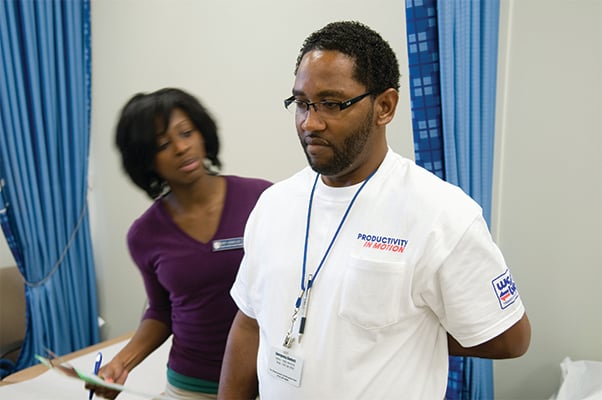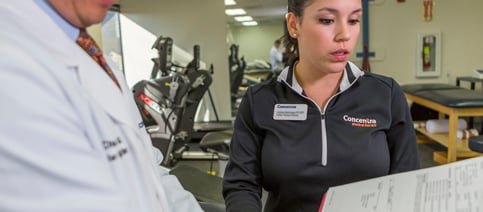
Pre-Employment Physical for Work
Skills-based Evaluation for A New Job

What is a human performance evaluation
After you’ve been offered a job with essential physical requirements, you may be asked to complete a pre-placement test, also known as a pre-employment physical or Human Performance Evaluation (HPE). The HPE is customized to the specific responsibilities of the job and only screens for skills that are needed on a regular basis. The intention is to protect you from potentially getting injured on the job.

Concentra's Approach
Human Performance Evaluations are conducted by licensed therapists through Concentra’s ADApt® program. The ADApt® program was developed in response to the Americans with Disabilities Act (ADA) and its impact on occupational medicine. In compliance with the ADA, an HPE is not discriminatory toward qualified employees. Every employee has different physical capabilities and needs. By evaluating your capabilities, we help your employer set you up for success, even before you start the job.

Elements of a Pre-Placement Physicals
- Review medical and occupational history along with medical exam
- Used for pre-employment and return-to-work testing
- Conducted by a Concentra physical therapist
- Evaluates functional tasks such as lifting, carrying, pushing, and pulling

How an HPE Benefits You
In a pre-employment physical or HPE, you may be asked to perform different tasks related to skills that are critical for success on the job, such as lifting, carrying, pushing, and pulling. If you’re injured on the job, your employer might require an HPE as a return-to-work assessment to ensure that it’s safe for you to resume full functions of the job. This assurance will help reduce the risk of re-injury and keep you safe on the job.
To accurately test your physical capabilities related to a specific job task, Concentra physical therapists replicate the physical demands associated with a particular job at the medical center. HPEs also assist in identifying ergonomic risk factors to help your employer improve working conditions that may lead to injuries or impact safety measures.